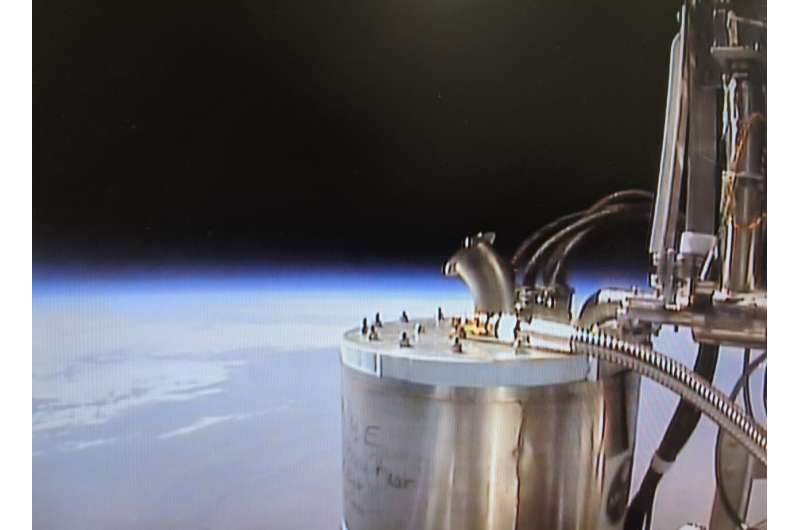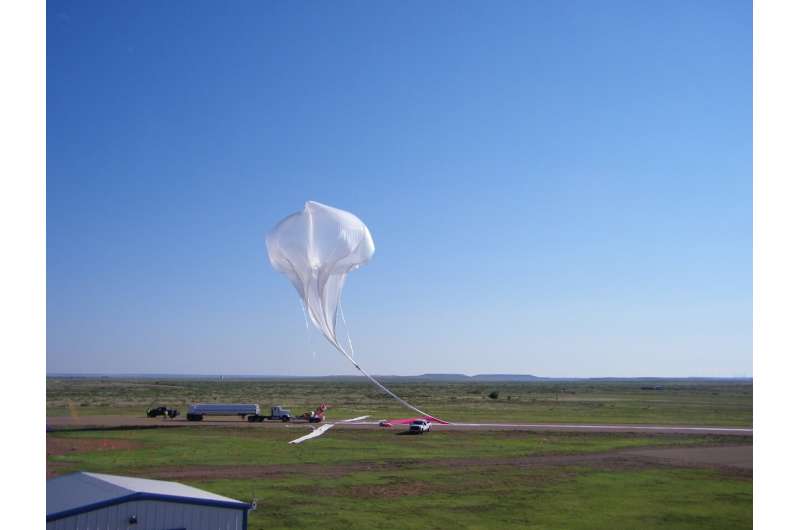By beginning the cooling at the balloon's float altitude of 120,000 feet, the team can make use of lighter-weight material in the dewar design to ensure the overall weight of the telescope inside the dewar doesn't exceed the balloon's lift capacity.
In 2019, the BOBCAT-1 mission successfully tested cryogen transfer into a dewar while at balloon float altitudes. For this second flight, the team hopes to repeat cryogen transfer successfully into an even lighter weight dewar with walls as thin as a soda can.
BOBCAT is a technology demonstration developed by Dr. Alan J. Kogut of NASA's Goddard Space Flight Center in Greenbelt, Maryland. Kogut and his team plan to develop a series of experiments for balloon flights using cold observatory telescopes that would radically improve the sensitivity of the next generation of observations in the far-infrared, which is a wavelength commonly used to study black holes, nebulas and the formation of new solar systems.

Along with BOBCAT, other missions for the Spring Fort Sumner campaign include:
- Columbia Balloon Scientific Facility Tech Demo: Demonstration flight to validate a sunset ballast.
- The Balloon-Borne Chirpsounder (BBC): A demonstration flight testing a new technology for measuring ion concentration in the ionosphere.
- All Sky Heliospheric Imager (ASHI): An all-sky camera that will be installed on the topside of the balloon to provide a full view of the sky above the balloon at night to view heliospheric structures. The mission hopes to eventually launch aboard a larger spacecraft in the future.
- Primordial Inflation Polarization Explorer (PIPER): Twin telescopes cooled to nearly absolute zero measuring the polarization of the cosmic microwave background in search of primordial gravity waves created during an early-universe inflationary period. This will be the mission's third flight.
- Experimental Module for Iterative Design of Satellite Subsystem V. 2 (EMIDSS): Technology validation and scientific demonstrator for development of instrumentation and communications to help with investigations into climate change in Mexico and payload schemes for the future satellite missions. This mission supports the Aerospace Development Center and Applied Science and Technology Institute Autonomous National University of Mexico.
To follow the missions in the 2021 Fort Sumner spring campaign, visit NASA's Columbia Scientific Balloon Facility's website for real-time updates of a balloon's altitude and GPS location during flight.
Most of these missions will fly on NASA heavy-lift, zero-pressure scientific balloons, some of which can be as large as a football stadium when fully inflated (BBC will fly on a smaller balloon). These balloons have open ducts hanging from the sides to allow gas to escape, and to prevent the pressure inside the balloon from building up during gas expansion as the balloon rises above Earth's surface. The duration of this type of balloon is limited because of gas loss, mostly due to the day/night cycling of the balloon.
NASA's scientific balloons offer low-cost, near-space access for suspended payloads weighing up to 8,000 pounds to conduct technology demonstration tests as well as scientific investigations in fields such as astrophysics, heliophysics, and atmospheric research. Depending on the goals and objectives of a specific mission, balloon flight durations can run hours to multiple days or weeks for longer-term tests and data collection.
NASA's Wallops Flight Facility manages the agency's Scientific Balloon Program with 10 to 15 flights on average each year from launch sites worldwide for the NASA Science Mission Directorate Astrophysics Division. Peraton, which operates NASA's Columbia Scientific Balloon Facility (CSBF) in Palestine, Texas, provides mission planning, engineering services and field operations for NASA's scientific balloon program. CSBF has launched more than 1,700 scientific balloons in the more than 35 years of operation. Raven Aerostar provides fabrication of NASA's stratospheric balloons.



